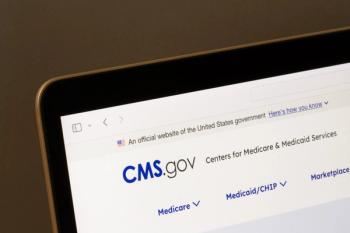
The pharmacist’s role in transitions of care
As hospitals face decreased reimbursements, pharmacist involvement in pre- and post-discharge medication reconciliation is more important than ever.
During my rotation at a hospital in the Alameda Health System (AHS), in Oakland, Calif., I worked with the Care Transitions Team funded by the Gordon and Betty moore Foundation (CTT), made up of a pharmacist, nurse case managers, and social workers who partner with other healthcare providers to help reduce hospital readmissions. Members of this particular patient population have compounded social and medical problems that put them at higher risk for readmissions connected with their chronic obstructive pulmonary disease (COPD), HIV, and congestive heart failure (CHF).
The innovative efforts of a Transitional Care Pharmacist (TCP) help manage these patients. The pharmacist’s role was to make sure that upon their return home,patients would continue to take their medications appropriately, as prescribed by their physicians.
The program
In 2012, AHS joined the California-based initiative Avoid Readmissions through Collaboration (ARC), with the goal of reducing 30-day and 90-day readmissions through implementation of the PROJECT RED model, which includes a 12-step standardized approach to discharge planning and discharge education.
Early evidence shows promising declines in readmission rates resulting from the work of the CTT. For CTT patients admitted to the hospital from Oct 2012 to April 2013, there was a 39% reduction in 30-day readmissions (from 23% to 14%) and a 59% reduction in 90-day readmissions (56% to 23%) compared to the high-risk readmission rates occurring before the start of the CTT.
With the imposed penalty fee set by the Centers for Medicare and Medicaid Services (CMS) for readmission rates deemed excessive, the work of the CTT comes at a crucial time. The current penalty fee, 1% of every Medicare payment, is based on readmission rates for acute myocardial infarction (AMI), heart failure (HF), and pneumonia (PN). Beginning in 2014, the penalty will increase to 2%, and it is likely that in 2015 other conditions, such as stroke and COPD, will be added to the list of conditions. According to CMS, within 30 days of discharge 20% of Medicare patients are readmitted to the hospital because of medication errors that occur during patients’ transitions between healthcare facilities and their homes.
Calls and visits
At AHS, each patient receives a 24-hour post-discharge telephone call from one of the CTT members, and each patient is seen by the TCP between one and two weeks post-discharge. Sometimes repeated home visits are required until patients are transitioned to care at the ambulatory COPD Clinic or Healthy Hearts Clinic, or are seen by their primary care physicians.
The clinics not only enable collaboration between the TCP and respiratory therapists and cardiologists for medication management; they also enable the TCP to see patients, order and assess lab results, take vitals, review current drug regimens, complete medication titrations, and write prescriptions. These clinics also address social needs such as transportation, housing, and health insurance issues, and promote discussion with patients about their health issues and challenges.
The payoffs
Medication reconciliation is most important in the home, and I found the visits I made with the TCP to patients’ homes unique and exciting.
Often patients are readmitted because their low health literacy prevents them from understanding the discharge instructions; other times they may have received incomplete or conflicting information before discharge. While in the home, we often discover that medications patients were taking before they entered the hospital have not been reconciled with their new medications and that some patients are taking both. Taking the time to meet with patients in their homes makes all the difference in reducing medication-related readmissions.
With hospitals facing decreased reimbursements and other changes related to healthcare reform, it’s time for pharmacists to take advantage of this opportunity to employ the full extent of their education and training.
We need to promote the development of programs that reduce readmissions to hospitals through pharmacist involvement. It is a necessity for providing our patients with optimal healthcare. It is also very rewarding to see the positive health outcomes in patients that result from these interventions in medication therapy.
References:
1. Lonowski S. Improving care transitions: A strategy for reducing readmissions policy issue brief. 2012. Center for Improving Value in Health Care. Available at
2. Bayley K, Savitz L, Maddalone T, et al. Evaluation of patient care interventions and recommendations by a transitional care pharmacist. Therap Clin Risk Manag. 2007; 3(4): 695-703.
Lori Hurlbertis a Pharm D/MPH Candidate 2014 at the College of Pharmacy, Touro University, Vallejo, Calif. Contact her at
Newsletter
Pharmacy practice is always changing. Stay ahead of the curve with the Drug Topics newsletter and get the latest drug information, industry trends, and patient care tips.





















































































































































